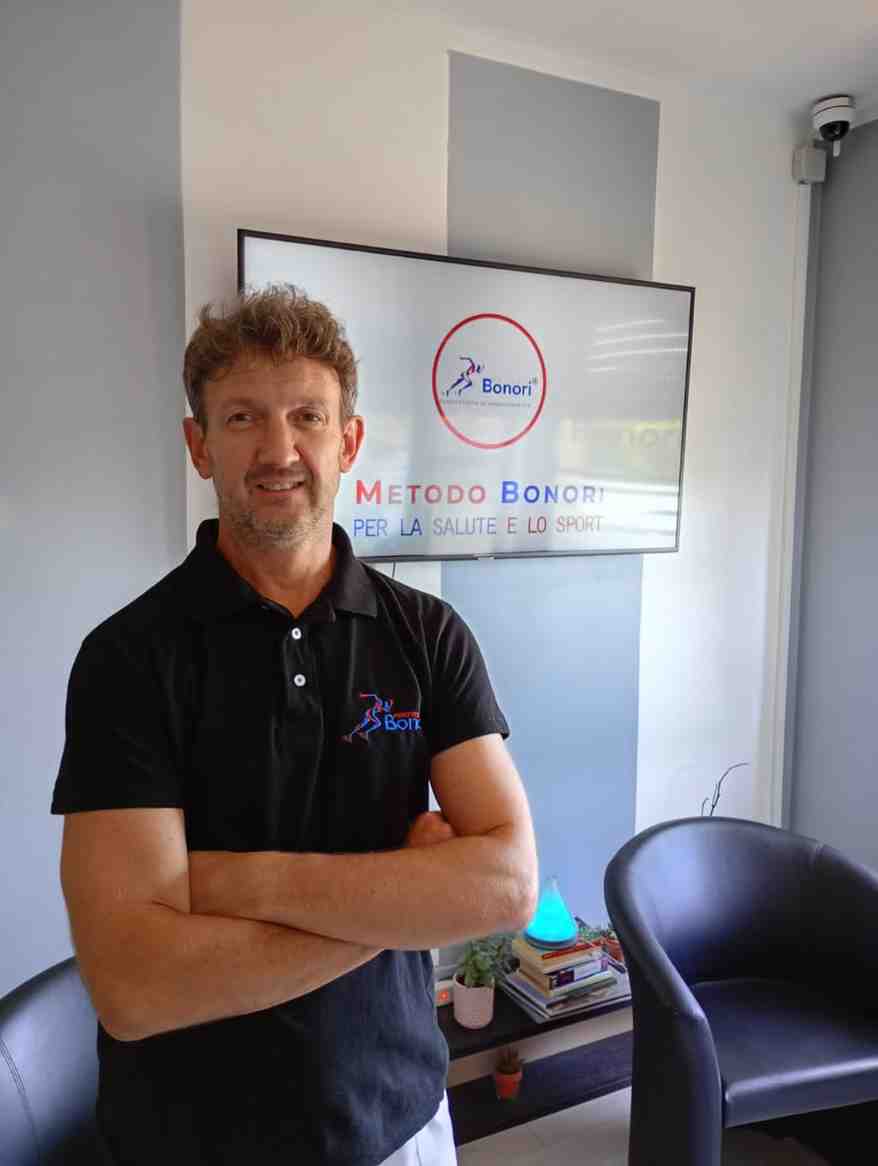AUCTORES
Globalize your Research
RESEARCH ARTICLE | DOI: https://doi.org/
*Corresponding Author:
Citation:
Copyright: © 10.31579/2578-8825/011
Received: 30 November -0001 | Accepted: 01 January 1970 | Published: 02 March 2018
Keywords: Farm household, Livelihood and Livelihood strategy.
Agricultural sectors play an important role in the national economy and livelihood of rural households of Ethiopia .The main objective of this study was to identify the determinants of farm households’ livelihood strategies in Demba Gofa District of Gamo Gofa Zone of Southern Nation Nationalities and People Regional State of Ethiopia. A purposive and random sampling technique was employed to select 147 household heads, and the triangulation method of research design was employed to conduct this research. Primary data was collected using key informant interview, focus group discussion, household observations and interview schedule while secondary datawere collected from office reports, documents, books, and publications. Both descriptive and econometric data analysis techniques were applied. The multinomial logit model result for determinants of choices of livelihood strategies revealed that out of the 15 explanatory variables, the choice of agriculture plus off farm livelihood strategy was determined by agro-ecology, farmland size, livestock holding and leadership position, the choice of agriculture plus nonfarm was affected by irrigation use, credit use, distance from near market center and leadership position, and choice of agriculture plus off farm plus nonfarm was influenced by, the education level of the household head, size of farmland, frequency of extension service, irrigation use, credit use, distance from near market center and leadership position of household heads. The finding of this study revealed that most farm households who chose farm and nonfarm livelihood strategies were improved their livelihood status. The results of this study suggest that any interventions in the livelihood of farm households need to consider the asset level they own, the dynamics of livelihood system and socio-economic contexts of the area.
Ethiopia is an agrarian economy and the agricultural sector plays an important role in the national economy and livelihood of rural households. Ethiopian agriculture depends on rainfed farming which is subjectto climatic stresses. The outcome of these stress factors affects the food security, health, and wellbeing ofrural households.Since the rural poor are never the same in their characteristics and response strategies to various stresses, policy information, and implementation has to fit with these diversities. The majority of households in Ethiopia are poor, often face income fluctuation, and fail to smooth their consumption patterns due to price changes, weather related shocks, pests, death, and illness of family member, as well as livestock deaths (Woinishet, 2010).Many farm households lack opportunity and capability to engage in satisfactory livelihood activities and face food insecurityover the various months of the year.The livelihood strategy choices play an important role in determinig the livelihoods of the rural farm households.Ellis and Friedman (2005) indicate that the livelihood strategies that rural households choosedetermine their entery to and exit from poverty.
Scholarly studies on household livelihoods focus on contextualized analysis. The studies on livelihood diversification of rural households are meant to focus on the thinking for multiple entry options to various contexts and sets of livelihood strategies of households (Adugna, 2008). Since livelihood systems are related to local economies, policy has to focus on this. Such study entails the identifications of the numerous factors that determine the abilities of rural households in their choice of livelihood strategies and this approach has received attention due to the increasing threat of livelihood vulnerability sets to the poor. Thus, a thorough understanding of alternative livelihood strategies of rural households is important to design policies, support rural farm households, and empower them to manage the risk sets and enhance their resilience against the available and perceived risk sets. Such understanding is also important for informing local and contextualized policies for local development.
Many researchers have analyzed the different factors that determine the choice of livelihood strategies by rural farm households. Stifel (2010) analyzed factors such as age of household head, migrant (dummy), household structure, education, landholding, access to formal credit, community characteristics (phone, piped water and electricity access), distance to nearest city.Similarily, Berihanu(2010) analyzed the demogiraphic and socio-economic features such as sex, age, family size, educational status, asset holding, initial occupation and financial sources, and practices of saving and credit usage in relation to income generating activities. Besides commonly analyzed factors like education and gender differences, distance from urban centers plays a key role in determining access to non-farm employment (Amendola and Vecchi, 2007). All the above socio-economic and other related factors that researchers pointed out conistrain or access the different groups of rural household’s participation in a range of livelihood strategies. Different factors affect participation or choice of livelihood strategies differently. This means that the factors that favor or constrain one livelihood strategy may or may not favor or challenge the other. The livelihood strategy mix of rural households always vary and this requires periodic assessments in terms of policies implemented and new farm strategy sets that are available to rural households from time to time. The diversity, the dynamics and the set of ‘portfolios’, and the mix of assets available to rural households vary in context and is an issue of continuous study (Farrington et al., 2002).
Various studies conducted in Ethiopia rural context confirm that households focus on on-farm, off-farm and non-farm strategies. However, variations in contexts, institutional set ups and livelihood resources to which households have access to and control over, always affect the set of choices from the available set of strategies in the specific location and the risk sets. Therefore, participation of rural households in diverse portifolio of livelihood activities is important for withstanding the different conditions of vulnerability contexts and the requirements for the diverse entry options households choose from.
Therefore, assessing the determinants in this context is timely and worthwhile to inform policy alternatives that match to the dynamics in and contexts about the livelihood portfolios of farm households in the selected district.
The objectives of the study were:
a) To assess the main livelihood strategies adopted byrural farm households in the study area.
b) To examine the determinants of choice of livelihood strategies in the study areas.
Demba Gofa Woreda is one of the 15 Districts of Gamo Gofa zone in SNNPRS of Ethiopia. The administrative center, Sawla town, is located at a distance of 285 km from Hawassa and 525 km from Addis Ababa. The District is located between altitudes of 1350-2600m above sea level, latitudes of 8 o11' 21”- 9o 12' 24” North and longitudes of 42 o 19' 35”- 44 o 30' 26” East. The capital town of the Woreda, Sawla, which is north western part of the zonal center, Arba Minch town, located SouthWest of Hawassa. It bordered by Dawro Zone to the north, Geze Gofa to North West, Oyda to the South West, and Zala to the south and east. The total area of the Woreda is 979 km2 which covers 8% of Gamo Gofa Zone. From total 97,900 hectare of land, 33,290, 23, 400, 6596, 7700, 5050, 5000 and 16,864 hectare of land covered by crop, rangeland, future unproductive land, public and private forest, bush, future productive land, and population settlement respectively, and the Woreda classified into 38 rural Kebeles (CSA, 2007).
Sample and Sampling Procedure
In this study, both purposive and random sampling method was used. First, purposely lowland and midland areas were selected since most of households were aided by Productive Safety Net Program compared to the highland areas (Woreda Agriculture Office report).Then after, sample households were selected randomly from each of lowland (three Kebele Administrations) and midland (one Kebele Administration) agro-ecology. This study applied a simplified formula provided to determine the required sample size at 95% confidence level, degree of variability=0.5 and level of precision = 9 %, which was provided by (Mesfin Duguma, 2006). The formula is written as follows:
n = __N______. …………… …………………………(1)
1+N (e) 2
Where n= Sample size, N= population size, and (e) refers to level of pricision, which is 9% (0.09). Based on this, 147 sample households were selected from Kebele diary of 2416 households (though based on the formula only 117 sample households were assumed to be selected).
Type, Source and Method of Data Collection
The data type was both qualitative and quantitative in nature, and both primary and secondary data were used. Primary data was collected through household survey, focus group discussion, and key informant interview and household observations. The primary data was collected by Enumerators who were development agent of the sample Kebele administrations. Secondary data which are also quantitative and qualitative in their form were collected from governmental organizations such as Office of agriculture, health office, finance and economic development office reports, documents, books, publications and other available source from records of NGOsoperating in the area. The field study combined key informant interviews, focus group discussions, and household survey interview. Structured and semi-structured interview schedule were developed to undertake the household survey interview.
Analyses of both qualitative and quantitative data were carried out. Data collected through structured interview schedule were processed and coded using SPSS software for further analysis. Quantitative categorical type of data was analyzed using chi-square test. But narrative type of analysis was used to analyze qualitative type of data, and to enrich and illustrate a qualitative conclusion. After computing the descriptive statistics, a multinomial logistic regression was used (Green, 2003).The dependent variable of the study, livelihood strategy, is unordered, categorical variable with four alternatives. The dependent variables for the determinants of rural farm households’ choice of livelihood strategies were specified as;
Y=1, if the choice lies in On-farm alone
Y=2, if the choice lies in On-farm and Off-farm
Y=3, if the choice lies in On-farm and Non-farm
Y=4, if the choice lies in combination of On-farm, Non-farm, and Off-farm
Different variables were expected to affect livelihood strategies of rural farm households in the study area. These variables are dummy, categorical, and continuous in nature. The continuous variables are age, education level, family size, livestock number, dependency ratio, land size, distance to market center, and annual income from cash crops. The dummy, and or categorical variables include: sex, agro-ecology, credit use, participation in cooperatives, and participation in leadership, and access to irrigation use.
Results And Discussion
Based on wealth criteria and local perceptions of the society, discussions conducted with the focus groups revealed the existence of socio-economic inequality within the society. The wealth category of sample respondents were distributed as poor (34.7%), middle (40.1%), and well-off (25.2%).
The survey result showed that 11.6, 10.2, 52.4 and 25.9 percent of sample respondents derived their livelihood from on-farm alone, on-farm and off-farm, on-farm and no-farm, and on-farm, off-farm and on-farm activities respectively. More than half of sample household derive their livelihood from on-farm + non-farm. This indicate that agriculture alone is not chosen as favorable livelihood strategy rather livelihood diversification strategy. The result of the sample survey also depicted that, most of sample households diversify their livelihood particularly above 90% of the poor diversify their livelihoods due to shortage of farm land (compared to the middle and better-off households). The difference in livelihood strategies choice implies the existence of significant barriers in selection of the most remunerative livelihood strategy (Yishak, 2014). The statistical analysis also indicated that, there is significant difference across the wealth category of the sample households to engage in diverse household livelihood strategies at less than 1% probability level.
Livelihood Strategies | Households’ Wealth Category (%) | |||
Table 1: Choice of Livelihood Strategies by Wealth Category
Factors Affecting Farm Household Livelihood Strategies
Factors that (either positively or negatively) affect rural households’ choice of on-farm and off-farm livelihood strategy over on-farm alone (since it’s a reference category) were agro-ecology, farmland size, livestock holding and leadership position in the village. Whereas choice of on-farm and non-farm livelihood strategy were affected by irrigation use, credit use, distance from near market center and leadership position in the locality, but farm households engagement in the combination of the three livelihood strategies (on-farm, off-farm and non-farm) affected by the education level of the household head, size of farmland, extension contact, irrigation use, credit use, distance from near market center and leadership position of household head in the village.
It has to be considered that the multinomial logit estimates are reported for three of the four categories of livelihood strategies choice. Meaning that the first alternative (i.e. choice of on-farm alone) was used as a reference group (a benchmark to alternative category which is the choice of the other three). The credible implication and odds ratio of the significant explanatory variables on the choice of households’ livelihood strategies are presented as follows:
Education Level Household Head (EDU): The multinomial model result indicates that the variable education had negatively and significantly influenced the household choices of on-farm + off-farm + non-farm livelihood strategy at less than 5% probability level. The result of the regression also revealed that, if other factors held constant, as education level of the household increases by one year, the odds-ratio in favor of the probability of the household to choose on-farm with off-farm and non-farm livelihood strategy decrease by a factor 0.715. This finding indicates that those farm household heads with high educational level are less likely diversify livelihood strategies into on-farm + off-farm + non-farm livelihood activities than those do not. This is most probably due to the inclusion of off-farm activities in this livelihood strategy since they think the activity as low remunerative, and less social value has given, and thus, the better educated farmers who have better skill, experience and knowledge less likely to participate in it. On other hand, a better educated household more likely to choice farming alone since they believe that technology based farming as preferable and can improve household wealth status than off-farm activities. Less availability of the work in the village, low social acceptance and seasonability of the off-farm activities are some of the causes that make the better educated households less likely to choice it. The other thing that is similar with what has discussed is that most of households who participate in this livelihood strategy also participate in less remunerable non-farm activities. Rural farm households who participate in this livelihood strategy were middle income categories while the educated farmers were more empowered with relatively strong social connection. Better educated farmers analyze the situations where they are living and well predict that what will have to be done rather than simply accepting what others say in general since they go with relatively adequate information that they are not as such negligence in comparison to less educated ones regarding to their technology acceptance and use. More educated farmers easily communicate others and have better access to claim as well as to have better linkage with someone who has assets such as irrigation farmland in his area. This result finding is similar with Bhatta et al., 2002 and Destaw (2003) but opposite with the findings of Berhanu (2007), Adugna (2008), Gebru and Beyene (2012), and Yishak et al., 2014.
Agro-Ecology (AGRO): This variable was found to be positively and significantly influenced diversification of the livelihood strategies into farm plus off-farm at less than 10% probability level. This result demonstrates that the magnitude of diversifying the livelihood into farming with off-farming increases as we go from low land to mid land. Unfair land distribution and grazing land, in addition to marginalized land and infertile soil with steep slope land structure, forces people who live in midland agro-ecology to engage in alternative livelihood strategies like off-farm activities. Consequence of this, all the agricultural production is low, and the poor households in the area involve in low remunerative works such as collecting fire wood, making charcoal as well as mat and selling house construction materials which comes from the near forest resources to cope up with the food insecurity situations. Moreover, lack of infrastructure in the area also constrains the delivery of many new technology as well as public services which improves the way of living of the poor households. Opposite to this, in low land areas the better topography which is convenient for farming, and land distribution is relatively better than the meddlers’. This fair land distribution and plain topography in lowland allow farmers to produce crops and rear various types of livestock so that they stick mostly with farming. Thus, the probability of diversifying livelihood into farming with off-farming activity increases by a factor of 60.736 for those farmers who are living in midland area. This model result finding is similar with the previous finding by (Yishak et al., 2014).
Size of Farmland Owned (LANDSIZE): As hypothesized, the area of land owned by the farm household has a significant and negative correlation with the likelihood of choosing on-farm + off-farm, and agriculture + off-farm + non-farm livelihood strategies at less than 10% probability level. The results of this study suggest that rural households with more land and hence gain more crop output either through intensification or not rather than diversifying from agriculture since they draw incentives of land productivity. This implies the chances of choosing agriculture in the context of having large land size decreases the probability of diversifying to on-farm + off farm, and to the three activities (on-farm + off-farm, non-farm activities) by a factor of 0.067 and 0.3 respectively. A unit increase in land size results in a more decrease in probability choosing farm + off-farm livelihood strategies than the probability of choosing farm + off-farm + non-farm. On the other hand the probability of diversifying livelihoods decreases by increasing land size as farmers with more land supposed to stay on farm since land stimulates farming. As with agriculture, the effects of diversification on environmental resource management are mixed and context-specific. The growth of non-farm income sources might be expected to reduce the need for landless rural dwellers to carry out extractive practices in local environments for survival. On the other hand, for settled agriculturalists non-farm earning opportunities can result in neglect of labour-intensive conservation practices if labour availability is reduced (Ellis, 2008). This result is in line with that of Adugna (2008) and Yishak, 2014. The implication is that access to farm land is the most critical issue for farm households since those who with promising farmland do not need to involve in off-farm activities even if there is other challenges.
Livestock Holding in Total Livestock Unit (LVSTK): This variable was expected to influence the choice of livelihood strategies by the households negatively. In line with prior expectation, livestock holding (in TLU) negatively influence households’ choice of farming + off-farm livelihood strategy at less than 5% probability level.This result suggests that a household having larger size of livestock are less likely to diversify the livelihood strategies into non-farm and/or off-farm activities compared to those who own small number. Majority of farm households depend on livestock production for their farm income. The negative association between livelihood diversification and livestock ownership indicates that herd size creates better opportunity to earn more income from livestock production. The income generated from livestock helps households to fulfill family requirement including food. Moreover, increased livestock ownership has also a great importance in improving soil fertility and hence this increases field crop production. As a result, households who can get the required amount of food from livestock may not engage in another income generating activities unless and otherwise aimed to increase their asset holding. On other hand, the result shows that the households with lower livestock holding would be obliged to diversify livelihoods into farm and off-farm in order to meet needs. According to the study, keeping other variables constant, the likelihood of diversifying the livelihoods into farm + off-farm activities decrease by a factor 0.511 while with one additional unit increase of livestock number (in TLU).This finding is congruent with many others; findings by Adugna (2008) and (Yishak et al., 2014).
Extension Contact: As expected, this variable was found to have negative and significant influence of livelihood diversification into a combination of on-farm with off-farm and non-farm activities at less than 10% probability level. This result implies that households having more frequency of extension contact are less likely to diversify their livelihood strategies into farm + off-farm + non-farm activities. From the model result, other things being constant, the probability of a household diversifying into the three combined strategy (farm with off-farm and non-farm) decreased by a factor of 1.68, for those farmers with more frequency of extension contact. The objectives of extension is to change farmers outlook towards their difficulties which assists them adapt better solution to their livelihoods. Thus, the information obtained and the knowledge and skill gained from extension organization may influence farmers’ skill and decision making on seeking diversification. The frequent extension contact received will increase the tendency of household to participate in farm activities. This may be also explained by the factors that the message that farmer gain from extension agents help them to initiate to participate in farming activities.
Irrigation Use (IRGTN):Away from what was expected, the model result indicates that the variable, irrigation water use has found to be positively and significantly influence households’ choice of livelihood diversification in to farm + non-farm, and farm + off-farm + non-farm livelihood strategies at less than 1% and 5% probability level. This implies that households with access to irrigation water have more likely to diversify their livelihood in to farm plus non-farm and off-farm activities than those who have no irrigation water access. There are two probable reasons. The first one is that irrigators gain enough income from production of food crops (maize, potatoes and others) during agricultural off-season/dry season, and cash crops such as vegetables (onion, tomatoes and etc) during agricultural season. Secondly, households with access to improved irrigation infrastructure have strong social networks and better relations (since they have high social capital that they can access cultivated irrigation land through different means easily regardless of the size of land). In line with this, things should be considered is that in the study area there is irrigation users’ cooperatives which is very important for information sharing and as a result households participate in another diversification options in order to improve their livelihoods. Having access to the improved irrigation infrastructure was a crucial factor that provided many households with the opportunity to diversify their livelihood activities and thereby increase their levels of income (Sellamuttu et al., 2013). Others also advocate that improved access to irrigation indirectly results in household livelihood strategy diversification through improved infrastructure such as road networks and transport access as well. Households allocate their half time for farming and the rest half time participate in different livelihood activities. In opposite to the model result, (Kitchaicharoen et al., 2008) presented that having better access to irrigation water allows farmers to use their available land for crop production to increase their income and this can enable farmers to adopt new technologies as a result leading to increased income from farming. Similarly, Christine (2004) confirms that households with access to irrigation water likely to be in a good position to produce enough food, even a surplus. As surplus is sold, families are able to pay for school fees, pay for health services and prepare their farms well for the following season. It is also noted that households with access to irrigated water are able to prepare farms for early planting. This contributes to good performance of their plots and therefore high production. But this contradicts the model result and the condition which presented in the study area.
Credit Use (CREDIT): Unlike what is expected, the model result indicated that credit use found to be negative and significant influence on livelihood strategy choice of farm+ non-farm, and farm + off-farm + non-farm livelihood strategies at less than 10 % and 5% probability level respectively. This implies that farm households who have access to credit less likely to diversify in to off-and non-farm activities instead they participate in agricultural activities. The probable reason is that farm households’ fear for taking risks if they face failure, or challenge while in their participation in off-farm and non-farm activities. On other words, credit use allows farmers to follow agricultural intensification by accessing farm inputs (DAP, UREA and improved seed varieties) which in turn improves productivity. Because of soil infertility, including poor farmers in the study area purchase farm inputs to increase crop production and secure their food security despite of unreasonable price of these inputs. The finding of the model result also depicts that, other things being constant, the chance of diversifying the livelihood into farm +non-farm, and combination of the three (farm + off-farm + non-farm) livelihood strategy drops by a factor of 0.188 and 0.096 respectively when credit use increase by a households. This is consistent with Berhanu (2007), Khan (2007) and Adugna (2008) finding that confirm the fact that access and use of credit is very important asset in rural livelihoods not only to finance agricultural inputs activities, but also to protect loss of crucial livelihood assets such as cattle due to seasonal food shortage, illness or death. Thus, access and credit use is important for rural households to increase agricultural production than for livelihood diversification. In contrary to this, the finding was inconsistent with Stifel (2010), Gebrehiwot and Fekadu (2012), whose conclusion proves that access to credit plays a pivot role in strengthening smallholders’ potential to diversify their livelihood strategies and cope with stresses like drought.
Distance from Market Center (DSMKT): In line with what is expected, the variable, found to have negatively and significantly (at less than 10% probability level) influenced on the choice of farm +off-farm, and farm + off-farm + non-farm livelihood strategies. This means proximity to market center is another constraint that can affect farm households’ engagement into off-farm and non-farm income generating activities, which is determined by the existing infrastructural facilities to link the urban and rural people like access to road networks or transport. The interpretation of the odds-ratio for the distance from market centre indicates that, other things being constant, the probability of the respondents to choose on-farm + off-farm, and on-farm + off-farm + non-farm livelihood strategies together decreases by a factor of 0.598 and 0.568 respectively as the distance increases by one kilometer. This is because households nearby to market center gets several key advantages such as access to different information, terms of exchange for assets, save their substantial time, much lower transport costs and better and more remunerative non-farm, and off-farm activities. Also due to these all advantages households are more empowered than their counterparts and thus, their bargaining power is better and they do not face ambiguity when making decision in their way. Moreover, households near market center can cope up with harshly conditions relatively during food shortage times; they respond to shocks early by their own than waiting for food aid. By equipping communities with the ability to manage and respond to shocks in the early stages of a crisis, strategic livelihoods interventions allow for more timely and appropriate responses to disasters than is possible with typical emergency relief assistance. In relation to this early protection and promotion of people’s livelihoods significantly reduces the need for massive food aid operations when malnutrition and disease reach acute levels. Farmers usually sell their produce at the village market place or nearby town markets. Proper functioning of markets are the basis for efficient resource allocation in the free market economy. On other hand, indirectly remoteness affects the choice set of livelihood strategies available to households by affecting transaction costs and by determining the degree of access to markets and to market information. Households living in a community which is away from market center are more likely to allocate labor to farming activities that are geared toward home consumption (Stifel, 2008). This finding was consistent with the previous finding which was done by Gebrehiwot and Fekadu (2012).
Leadership Position (LDRSP): this variable was found to be positive and significant influence on livelihood diversification into farm + non-farm, farm plus off-farm plus non-farm livelihood strategy at less than 5% probability level. This implies that those farmers who have participated in social leadership in local area are more likely to diversify livelihood into off-farm and non-farm activities than those farmers who have no leadership role in their village. The possible reason is that household head’s participation in local leadership and this can help to have more access for information, share more experience with others in social environment, creating more social network with outside societies. Survey respondents who play a leadership role were 98 % and 91.2 % more likely to diversify in to on-farm + non-farm, and the three (on-farm + off-farm + non-farm) activities. This multinomial logistic regression result was confirmed by key Informants and Focus Group Discussants. For example, one of key informants, Ato Mengesha Gorfo, head of kebele administration, with better-off households, said that his household involve both in off-farm activities (such as a daily wage laborer when work is available in the area like school construction) and non-farm activities such kiosks/shop keeping, petty trading etc. in addition to farming activities. But, even most of others who are poor and with weak social relation in his/her environment do not want to participate in off-farm activities unless and otherwise they obliged to do so due to challenging conditions such as droughts and food shortages. This is why because traditional attitudes/cultural beliefs influence middle income gainers not to participate in off-farm activities that they see the activities as only for specific isolated groups.
Table 2: Multinomial Logit Model Parameter for On-farm + Off-farm Livelihood Strategies
The reference category is: On-farm alone. Source: computed from own survey data, 2015.
**, and * stand for significant at 5%, and 10% respectively.
Table 3: Multinomial Logit Model Parameter for On-farm + Non-farm Livelihood Strategies
The reference category is: On-farm alone. Source: computed from own survey data, 2015.
***, and * stand for significant at 1%, and 10% respectively.
On-farm + off-farm + non-farm
χ2
Source: Own Survey Result, 2015
Odds-ratio
Table 4: Multinomial Logit Model Parameter for On-farm + Off-farm + Non-farm Livelihood Strategies
The reference category is: On-farm alone. Source: computed from own survey data, 2015. **, and * stand for significant at 5% and 10% respectively.
The study characterized sample households as poor (34.7 %), middle (40.1 %) and better-off (25.2 %) based on land size, livestock owned, and crop output produced. The study show that a significant number of poor households were resource poor; they lack productive assets. In the study area, unlike the poor, better off households have better resources that help them to participate in livelihood activities they prefer. The asset level owned determines the adoption of households’ livelihood strategies. The key findings of the study revealed that, 11.6 %, 10.2%, 52.45% and 25.9% of households pursued on-farm alone, on-farm and off-farm, on-farm and non-farm, and combination of on-farm, off-farm and non-farm livelihood strategies at 1% probability level respectively. Shortage of farmland, lack of farm inputs and household income, poor quality of soil, and erratic rainfall is the case which repels households away from farming activities. To overcome such kind of obstacles poor households pursue on-farm plus off-farm, or combination of the three livelihood activities. This study has confirmed the importance of education, agro-ecology, farmland size, number of livestock owned in (TLU), annual cash crop income gained, irrigation use, credit use, distance from near market, and leadership role as important determinants of farm household livelihood strategy choice in the study area. While the log of odds of choice of livelihood diversification either in to off-farm/non-farm, or both decreases with increasing formal educational attainment of household head, farmland size, number of livestock owned (measured in TLU), annual cash crop income gained, credit use and distance from near market, but increases with increasing households’ participation in irrigation use, leadership role, and agro-ecology (more peoples living in lowland areas).
Land size (<0.1) and livestock ownership (< 0.05) were found to have negative association with on-farm plus off-farm livelihood strategy, but agro-ecology (<0.10) was found to be significant and positively influence household’s choice of on-farm plus off-farm livelihood strategy. Meanwhile, credit use and distance to near market significantly and negatively determine choice of on-farm plus non-farm activities at < 0.1 probability level. Irrigation use and participation in leadership, on the other hand, positively affect the same strategy at < 0.01 probability level. In the case of combination of the three activities (on-farm plus off-farm plus non-farm), education of household head (<0.05), land size (<0.10), extension contact (<0.10), credit use (<0.10), and distance to near market (< 0.1) were found significant and affect choice of this livelihood strategy negatively. On other hand, irrigation use and leadership participation positively affect the choice of on-farm plus off-farm plus non-farm livelihood strategies.
Generally, people’s options are heavily constrained by their circumstances, in particularly the place and society, into which they are living, and the asset level they own. Finally, policy makers and researchers must device a policy which addresses households’ social, psychological, attitudinal and vocational problems specifically taking under consideration of changing conditions and livelihood strategies over time first. Then, farm livelihoods can be improved through government’s policy intervention that can bring better access to resources and services in ways conducive to the area.
Authors would like to express their appreciation to various Offices of the Demba Gofa district (Demba Gofa Woreda Administration, Agriculture office, Finance and Economic Development Office) for their assistance during the course of the study and data collection. We finally appreciate numerous respondents for their patience during the interview time.
Clearly Auctoresonline and particularly Psychology and Mental Health Care Journal is dedicated to improving health care services for individuals and populations. The editorial boards' ability to efficiently recognize and share the global importance of health literacy with a variety of stakeholders. Auctoresonline publishing platform can be used to facilitate of optimal client-based services and should be added to health care professionals' repertoire of evidence-based health care resources.

Journal of Clinical Cardiology and Cardiovascular Intervention The submission and review process was adequate. However I think that the publication total value should have been enlightened in early fases. Thank you for all.

Journal of Women Health Care and Issues By the present mail, I want to say thank to you and tour colleagues for facilitating my published article. Specially thank you for the peer review process, support from the editorial office. I appreciate positively the quality of your journal.
Journal of Clinical Research and Reports I would be very delighted to submit my testimonial regarding the reviewer board and the editorial office. The reviewer board were accurate and helpful regarding any modifications for my manuscript. And the editorial office were very helpful and supportive in contacting and monitoring with any update and offering help. It was my pleasure to contribute with your promising Journal and I am looking forward for more collaboration.

We would like to thank the Journal of Thoracic Disease and Cardiothoracic Surgery because of the services they provided us for our articles. The peer-review process was done in a very excellent time manner, and the opinions of the reviewers helped us to improve our manuscript further. The editorial office had an outstanding correspondence with us and guided us in many ways. During a hard time of the pandemic that is affecting every one of us tremendously, the editorial office helped us make everything easier for publishing scientific work. Hope for a more scientific relationship with your Journal.

The peer-review process which consisted high quality queries on the paper. I did answer six reviewers’ questions and comments before the paper was accepted. The support from the editorial office is excellent.

Journal of Neuroscience and Neurological Surgery. I had the experience of publishing a research article recently. The whole process was simple from submission to publication. The reviewers made specific and valuable recommendations and corrections that improved the quality of my publication. I strongly recommend this Journal.

Dr. Katarzyna Byczkowska My testimonial covering: "The peer review process is quick and effective. The support from the editorial office is very professional and friendly. Quality of the Clinical Cardiology and Cardiovascular Interventions is scientific and publishes ground-breaking research on cardiology that is useful for other professionals in the field.

Thank you most sincerely, with regard to the support you have given in relation to the reviewing process and the processing of my article entitled "Large Cell Neuroendocrine Carcinoma of The Prostate Gland: A Review and Update" for publication in your esteemed Journal, Journal of Cancer Research and Cellular Therapeutics". The editorial team has been very supportive.

Testimony of Journal of Clinical Otorhinolaryngology: work with your Reviews has been a educational and constructive experience. The editorial office were very helpful and supportive. It was a pleasure to contribute to your Journal.

Dr. Bernard Terkimbi Utoo, I am happy to publish my scientific work in Journal of Women Health Care and Issues (JWHCI). The manuscript submission was seamless and peer review process was top notch. I was amazed that 4 reviewers worked on the manuscript which made it a highly technical, standard and excellent quality paper. I appreciate the format and consideration for the APC as well as the speed of publication. It is my pleasure to continue with this scientific relationship with the esteem JWHCI.

This is an acknowledgment for peer reviewers, editorial board of Journal of Clinical Research and Reports. They show a lot of consideration for us as publishers for our research article “Evaluation of the different factors associated with side effects of COVID-19 vaccination on medical students, Mutah university, Al-Karak, Jordan”, in a very professional and easy way. This journal is one of outstanding medical journal.
Dear Hao Jiang, to Journal of Nutrition and Food Processing We greatly appreciate the efficient, professional and rapid processing of our paper by your team. If there is anything else we should do, please do not hesitate to let us know. On behalf of my co-authors, we would like to express our great appreciation to editor and reviewers.

As an author who has recently published in the journal "Brain and Neurological Disorders". I am delighted to provide a testimonial on the peer review process, editorial office support, and the overall quality of the journal. The peer review process at Brain and Neurological Disorders is rigorous and meticulous, ensuring that only high-quality, evidence-based research is published. The reviewers are experts in their fields, and their comments and suggestions were constructive and helped improve the quality of my manuscript. The review process was timely and efficient, with clear communication from the editorial office at each stage. The support from the editorial office was exceptional throughout the entire process. The editorial staff was responsive, professional, and always willing to help. They provided valuable guidance on formatting, structure, and ethical considerations, making the submission process seamless. Moreover, they kept me informed about the status of my manuscript and provided timely updates, which made the process less stressful. The journal Brain and Neurological Disorders is of the highest quality, with a strong focus on publishing cutting-edge research in the field of neurology. The articles published in this journal are well-researched, rigorously peer-reviewed, and written by experts in the field. The journal maintains high standards, ensuring that readers are provided with the most up-to-date and reliable information on brain and neurological disorders. In conclusion, I had a wonderful experience publishing in Brain and Neurological Disorders. The peer review process was thorough, the editorial office provided exceptional support, and the journal's quality is second to none. I would highly recommend this journal to any researcher working in the field of neurology and brain disorders.

Dear Agrippa Hilda, Journal of Neuroscience and Neurological Surgery, Editorial Coordinator, I trust this message finds you well. I want to extend my appreciation for considering my article for publication in your esteemed journal. I am pleased to provide a testimonial regarding the peer review process and the support received from your editorial office. The peer review process for my paper was carried out in a highly professional and thorough manner. The feedback and comments provided by the authors were constructive and very useful in improving the quality of the manuscript. This rigorous assessment process undoubtedly contributes to the high standards maintained by your journal.

International Journal of Clinical Case Reports and Reviews. I strongly recommend to consider submitting your work to this high-quality journal. The support and availability of the Editorial staff is outstanding and the review process was both efficient and rigorous.

Thank you very much for publishing my Research Article titled “Comparing Treatment Outcome Of Allergic Rhinitis Patients After Using Fluticasone Nasal Spray And Nasal Douching" in the Journal of Clinical Otorhinolaryngology. As Medical Professionals we are immensely benefited from study of various informative Articles and Papers published in this high quality Journal. I look forward to enriching my knowledge by regular study of the Journal and contribute my future work in the field of ENT through the Journal for use by the medical fraternity. The support from the Editorial office was excellent and very prompt. I also welcome the comments received from the readers of my Research Article.

Dear Erica Kelsey, Editorial Coordinator of Cancer Research and Cellular Therapeutics Our team is very satisfied with the processing of our paper by your journal. That was fast, efficient, rigorous, but without unnecessary complications. We appreciated the very short time between the submission of the paper and its publication on line on your site.

I am very glad to say that the peer review process is very successful and fast and support from the Editorial Office. Therefore, I would like to continue our scientific relationship for a long time. And I especially thank you for your kindly attention towards my article. Have a good day!

"We recently published an article entitled “Influence of beta-Cyclodextrins upon the Degradation of Carbofuran Derivatives under Alkaline Conditions" in the Journal of “Pesticides and Biofertilizers” to show that the cyclodextrins protect the carbamates increasing their half-life time in the presence of basic conditions This will be very helpful to understand carbofuran behaviour in the analytical, agro-environmental and food areas. We greatly appreciated the interaction with the editor and the editorial team; we were particularly well accompanied during the course of the revision process, since all various steps towards publication were short and without delay".

I would like to express my gratitude towards you process of article review and submission. I found this to be very fair and expedient. Your follow up has been excellent. I have many publications in national and international journal and your process has been one of the best so far. Keep up the great work.

We are grateful for this opportunity to provide a glowing recommendation to the Journal of Psychiatry and Psychotherapy. We found that the editorial team were very supportive, helpful, kept us abreast of timelines and over all very professional in nature. The peer review process was rigorous, efficient and constructive that really enhanced our article submission. The experience with this journal remains one of our best ever and we look forward to providing future submissions in the near future.

I am very pleased to serve as EBM of the journal, I hope many years of my experience in stem cells can help the journal from one way or another. As we know, stem cells hold great potential for regenerative medicine, which are mostly used to promote the repair response of diseased, dysfunctional or injured tissue using stem cells or their derivatives. I think Stem Cell Research and Therapeutics International is a great platform to publish and share the understanding towards the biology and translational or clinical application of stem cells.

I would like to give my testimony in the support I have got by the peer review process and to support the editorial office where they were of asset to support young author like me to be encouraged to publish their work in your respected journal and globalize and share knowledge across the globe. I really give my great gratitude to your journal and the peer review including the editorial office.

I am delighted to publish our manuscript entitled "A Perspective on Cocaine Induced Stroke - Its Mechanisms and Management" in the Journal of Neuroscience and Neurological Surgery. The peer review process, support from the editorial office, and quality of the journal are excellent. The manuscripts published are of high quality and of excellent scientific value. I recommend this journal very much to colleagues.

Dr.Tania Muñoz, My experience as researcher and author of a review article in The Journal Clinical Cardiology and Interventions has been very enriching and stimulating. The editorial team is excellent, performs its work with absolute responsibility and delivery. They are proactive, dynamic and receptive to all proposals. Supporting at all times the vast universe of authors who choose them as an option for publication. The team of review specialists, members of the editorial board, are brilliant professionals, with remarkable performance in medical research and scientific methodology. Together they form a frontline team that consolidates the JCCI as a magnificent option for the publication and review of high-level medical articles and broad collective interest. I am honored to be able to share my review article and open to receive all your comments.

“The peer review process of JPMHC is quick and effective. Authors are benefited by good and professional reviewers with huge experience in the field of psychology and mental health. The support from the editorial office is very professional. People to contact to are friendly and happy to help and assist any query authors might have. Quality of the Journal is scientific and publishes ground-breaking research on mental health that is useful for other professionals in the field”.

Dear editorial department: On behalf of our team, I hereby certify the reliability and superiority of the International Journal of Clinical Case Reports and Reviews in the peer review process, editorial support, and journal quality. Firstly, the peer review process of the International Journal of Clinical Case Reports and Reviews is rigorous, fair, transparent, fast, and of high quality. The editorial department invites experts from relevant fields as anonymous reviewers to review all submitted manuscripts. These experts have rich academic backgrounds and experience, and can accurately evaluate the academic quality, originality, and suitability of manuscripts. The editorial department is committed to ensuring the rigor of the peer review process, while also making every effort to ensure a fast review cycle to meet the needs of authors and the academic community. Secondly, the editorial team of the International Journal of Clinical Case Reports and Reviews is composed of a group of senior scholars and professionals with rich experience and professional knowledge in related fields. The editorial department is committed to assisting authors in improving their manuscripts, ensuring their academic accuracy, clarity, and completeness. Editors actively collaborate with authors, providing useful suggestions and feedback to promote the improvement and development of the manuscript. We believe that the support of the editorial department is one of the key factors in ensuring the quality of the journal. Finally, the International Journal of Clinical Case Reports and Reviews is renowned for its high- quality articles and strict academic standards. The editorial department is committed to publishing innovative and academically valuable research results to promote the development and progress of related fields. The International Journal of Clinical Case Reports and Reviews is reasonably priced and ensures excellent service and quality ratio, allowing authors to obtain high-level academic publishing opportunities in an affordable manner. I hereby solemnly declare that the International Journal of Clinical Case Reports and Reviews has a high level of credibility and superiority in terms of peer review process, editorial support, reasonable fees, and journal quality. Sincerely, Rui Tao.

Clinical Cardiology and Cardiovascular Interventions I testity the covering of the peer review process, support from the editorial office, and quality of the journal.

Clinical Cardiology and Cardiovascular Interventions, we deeply appreciate the interest shown in our work and its publication. It has been a true pleasure to collaborate with you. The peer review process, as well as the support provided by the editorial office, have been exceptional, and the quality of the journal is very high, which was a determining factor in our decision to publish with you.
The peer reviewers process is quick and effective, the supports from editorial office is excellent, the quality of journal is high. I would like to collabroate with Internatioanl journal of Clinical Case Reports and Reviews journal clinically in the future time.

Clinical Cardiology and Cardiovascular Interventions, I would like to express my sincerest gratitude for the trust placed in our team for the publication in your journal. It has been a true pleasure to collaborate with you on this project. I am pleased to inform you that both the peer review process and the attention from the editorial coordination have been excellent. Your team has worked with dedication and professionalism to ensure that your publication meets the highest standards of quality. We are confident that this collaboration will result in mutual success, and we are eager to see the fruits of this shared effort.

Dear Dr. Jessica Magne, Editorial Coordinator 0f Clinical Cardiology and Cardiovascular Interventions, I hope this message finds you well. I want to express my utmost gratitude for your excellent work and for the dedication and speed in the publication process of my article titled "Navigating Innovation: Qualitative Insights on Using Technology for Health Education in Acute Coronary Syndrome Patients." I am very satisfied with the peer review process, the support from the editorial office, and the quality of the journal. I hope we can maintain our scientific relationship in the long term.
Dear Monica Gissare, - Editorial Coordinator of Nutrition and Food Processing. ¨My testimony with you is truly professional, with a positive response regarding the follow-up of the article and its review, you took into account my qualities and the importance of the topic¨.

Dear Dr. Jessica Magne, Editorial Coordinator 0f Clinical Cardiology and Cardiovascular Interventions, The review process for the article “The Handling of Anti-aggregants and Anticoagulants in the Oncologic Heart Patient Submitted to Surgery” was extremely rigorous and detailed. From the initial submission to the final acceptance, the editorial team at the “Journal of Clinical Cardiology and Cardiovascular Interventions” demonstrated a high level of professionalism and dedication. The reviewers provided constructive and detailed feedback, which was essential for improving the quality of our work. Communication was always clear and efficient, ensuring that all our questions were promptly addressed. The quality of the “Journal of Clinical Cardiology and Cardiovascular Interventions” is undeniable. It is a peer-reviewed, open-access publication dedicated exclusively to disseminating high-quality research in the field of clinical cardiology and cardiovascular interventions. The journal's impact factor is currently under evaluation, and it is indexed in reputable databases, which further reinforces its credibility and relevance in the scientific field. I highly recommend this journal to researchers looking for a reputable platform to publish their studies.

Dear Editorial Coordinator of the Journal of Nutrition and Food Processing! "I would like to thank the Journal of Nutrition and Food Processing for including and publishing my article. The peer review process was very quick, movement and precise. The Editorial Board has done an extremely conscientious job with much help, valuable comments and advices. I find the journal very valuable from a professional point of view, thank you very much for allowing me to be part of it and I would like to participate in the future!”

Dealing with The Journal of Neurology and Neurological Surgery was very smooth and comprehensive. The office staff took time to address my needs and the response from editors and the office was prompt and fair. I certainly hope to publish with this journal again.Their professionalism is apparent and more than satisfactory. Susan Weiner

My Testimonial Covering as fellowing: Lin-Show Chin. The peer reviewers process is quick and effective, the supports from editorial office is excellent, the quality of journal is high. I would like to collabroate with Internatioanl journal of Clinical Case Reports and Reviews.

My experience publishing in Psychology and Mental Health Care was exceptional. The peer review process was rigorous and constructive, with reviewers providing valuable insights that helped enhance the quality of our work. The editorial team was highly supportive and responsive, making the submission process smooth and efficient. The journal's commitment to high standards and academic rigor makes it a respected platform for quality research. I am grateful for the opportunity to publish in such a reputable journal.
My experience publishing in International Journal of Clinical Case Reports and Reviews was exceptional. I Come forth to Provide a Testimonial Covering the Peer Review Process and the editorial office for the Professional and Impartial Evaluation of the Manuscript.

I would like to offer my testimony in the support. I have received through the peer review process and support the editorial office where they are to support young authors like me, encourage them to publish their work in your esteemed journals, and globalize and share knowledge globally. I really appreciate your journal, peer review, and editorial office.
Dear Agrippa Hilda- Editorial Coordinator of Journal of Neuroscience and Neurological Surgery, "The peer review process was very quick and of high quality, which can also be seen in the articles in the journal. The collaboration with the editorial office was very good."

I would like to express my sincere gratitude for the support and efficiency provided by the editorial office throughout the publication process of my article, “Delayed Vulvar Metastases from Rectal Carcinoma: A Case Report.” I greatly appreciate the assistance and guidance I received from your team, which made the entire process smooth and efficient. The peer review process was thorough and constructive, contributing to the overall quality of the final article. I am very grateful for the high level of professionalism and commitment shown by the editorial staff, and I look forward to maintaining a long-term collaboration with the International Journal of Clinical Case Reports and Reviews.
To Dear Erin Aust, I would like to express my heartfelt appreciation for the opportunity to have my work published in this esteemed journal. The entire publication process was smooth and well-organized, and I am extremely satisfied with the final result. The Editorial Team demonstrated the utmost professionalism, providing prompt and insightful feedback throughout the review process. Their clear communication and constructive suggestions were invaluable in enhancing my manuscript, and their meticulous attention to detail and dedication to quality are truly commendable. Additionally, the support from the Editorial Office was exceptional. From the initial submission to the final publication, I was guided through every step of the process with great care and professionalism. The team's responsiveness and assistance made the entire experience both easy and stress-free. I am also deeply impressed by the quality and reputation of the journal. It is an honor to have my research featured in such a respected publication, and I am confident that it will make a meaningful contribution to the field.

"I am grateful for the opportunity of contributing to [International Journal of Clinical Case Reports and Reviews] and for the rigorous review process that enhances the quality of research published in your esteemed journal. I sincerely appreciate the time and effort of your team who have dedicatedly helped me in improvising changes and modifying my manuscript. The insightful comments and constructive feedback provided have been invaluable in refining and strengthening my work".

I thank the ‘Journal of Clinical Research and Reports’ for accepting this article for publication. This is a rigorously peer reviewed journal which is on all major global scientific data bases. I note the review process was prompt, thorough and professionally critical. It gave us an insight into a number of important scientific/statistical issues. The review prompted us to review the relevant literature again and look at the limitations of the study. The peer reviewers were open, clear in the instructions and the editorial team was very prompt in their communication. This journal certainly publishes quality research articles. I would recommend the journal for any future publications.

Dear Jessica Magne, with gratitude for the joint work. Fast process of receiving and processing the submitted scientific materials in “Clinical Cardiology and Cardiovascular Interventions”. High level of competence of the editors with clear and correct recommendations and ideas for enriching the article.

We found the peer review process quick and positive in its input. The support from the editorial officer has been very agile, always with the intention of improving the article and taking into account our subsequent corrections.

My article, titled 'No Way Out of the Smartphone Epidemic Without Considering the Insights of Brain Research,' has been republished in the International Journal of Clinical Case Reports and Reviews. The review process was seamless and professional, with the editors being both friendly and supportive. I am deeply grateful for their efforts.
To Dear Erin Aust – Editorial Coordinator of Journal of General Medicine and Clinical Practice! I declare that I am absolutely satisfied with your work carried out with great competence in following the manuscript during the various stages from its receipt, during the revision process to the final acceptance for publication. Thank Prof. Elvira Farina

Dear Jessica, and the super professional team of the ‘Clinical Cardiology and Cardiovascular Interventions’ I am sincerely grateful to the coordinated work of the journal team for the no problem with the submission of my manuscript: “Cardiometabolic Disorders in A Pregnant Woman with Severe Preeclampsia on the Background of Morbid Obesity (Case Report).” The review process by 5 experts was fast, and the comments were professional, which made it more specific and academic, and the process of publication and presentation of the article was excellent. I recommend that my colleagues publish articles in this journal, and I am interested in further scientific cooperation. Sincerely and best wishes, Dr. Oleg Golyanovskiy.

Dear Ashley Rosa, Editorial Coordinator of the journal - Psychology and Mental Health Care. " The process of obtaining publication of my article in the Psychology and Mental Health Journal was positive in all areas. The peer review process resulted in a number of valuable comments, the editorial process was collaborative and timely, and the quality of this journal has been quickly noticed, resulting in alternative journals contacting me to publish with them." Warm regards, Susan Anne Smith, PhD. Australian Breastfeeding Association.

Dear Jessica Magne, Editorial Coordinator, Clinical Cardiology and Cardiovascular Interventions, Auctores Publishing LLC. I appreciate the journal (JCCI) editorial office support, the entire team leads were always ready to help, not only on technical front but also on thorough process. Also, I should thank dear reviewers’ attention to detail and creative approach to teach me and bring new insights by their comments. Surely, more discussions and introduction of other hemodynamic devices would provide better prevention and management of shock states. Your efforts and dedication in presenting educational materials in this journal are commendable. Best wishes from, Farahnaz Fallahian.
Dear Maria Emerson, Editorial Coordinator, International Journal of Clinical Case Reports and Reviews, Auctores Publishing LLC. I am delighted to have published our manuscript, "Acute Colonic Pseudo-Obstruction (ACPO): A rare but serious complication following caesarean section." I want to thank the editorial team, especially Maria Emerson, for their prompt review of the manuscript, quick responses to queries, and overall support. Yours sincerely Dr. Victor Olagundoye.

Dear Ashley Rosa, Editorial Coordinator, International Journal of Clinical Case Reports and Reviews. Many thanks for publishing this manuscript after I lost confidence the editors were most helpful, more than other journals Best wishes from, Susan Anne Smith, PhD. Australian Breastfeeding Association.

Dear Agrippa Hilda, Editorial Coordinator, Journal of Neuroscience and Neurological Surgery. The entire process including article submission, review, revision, and publication was extremely easy. The journal editor was prompt and helpful, and the reviewers contributed to the quality of the paper. Thank you so much! Eric Nussbaum, MD
Dr Hala Al Shaikh This is to acknowledge that the peer review process for the article ’ A Novel Gnrh1 Gene Mutation in Four Omani Male Siblings, Presentation and Management ’ sent to the International Journal of Clinical Case Reports and Reviews was quick and smooth. The editorial office was prompt with easy communication.

Dear Erin Aust, Editorial Coordinator, Journal of General Medicine and Clinical Practice. We are pleased to share our experience with the “Journal of General Medicine and Clinical Practice”, following the successful publication of our article. The peer review process was thorough and constructive, helping to improve the clarity and quality of the manuscript. We are especially thankful to Ms. Erin Aust, the Editorial Coordinator, for her prompt communication and continuous support throughout the process. Her professionalism ensured a smooth and efficient publication experience. The journal upholds high editorial standards, and we highly recommend it to fellow researchers seeking a credible platform for their work. Best wishes By, Dr. Rakhi Mishra.

Dear Jessica Magne, Editorial Coordinator, Clinical Cardiology and Cardiovascular Interventions, Auctores Publishing LLC. The peer review process of the journal of Clinical Cardiology and Cardiovascular Interventions was excellent and fast, as was the support of the editorial office and the quality of the journal. Kind regards Walter F. Riesen Prof. Dr. Dr. h.c. Walter F. Riesen.

Dear Ashley Rosa, Editorial Coordinator, International Journal of Clinical Case Reports and Reviews, Auctores Publishing LLC. Thank you for publishing our article, Exploring Clozapine's Efficacy in Managing Aggression: A Multiple Single-Case Study in Forensic Psychiatry in the international journal of clinical case reports and reviews. We found the peer review process very professional and efficient. The comments were constructive, and the whole process was efficient. On behalf of the co-authors, I would like to thank you for publishing this article. With regards, Dr. Jelle R. Lettinga.

Dear Clarissa Eric, Editorial Coordinator, Journal of Clinical Case Reports and Studies, I would like to express my deep admiration for the exceptional professionalism demonstrated by your journal. I am thoroughly impressed by the speed of the editorial process, the substantive and insightful reviews, and the meticulous preparation of the manuscript for publication. Additionally, I greatly appreciate the courteous and immediate responses from your editorial office to all my inquiries. Best Regards, Dariusz Ziora

Dear Chrystine Mejia, Editorial Coordinator, Journal of Neurodegeneration and Neurorehabilitation, Auctores Publishing LLC, We would like to thank the editorial team for the smooth and high-quality communication leading up to the publication of our article in the Journal of Neurodegeneration and Neurorehabilitation. The reviewers have extensive knowledge in the field, and their relevant questions helped to add value to our publication. Kind regards, Dr. Ravi Shrivastava.

Dear Clarissa Eric, Editorial Coordinator, Journal of Clinical Case Reports and Studies, Auctores Publishing LLC, USA Office: +1-(302)-520-2644. I would like to express my sincere appreciation for the efficient and professional handling of my case report by the ‘Journal of Clinical Case Reports and Studies’. The peer review process was not only fast but also highly constructive—the reviewers’ comments were clear, relevant, and greatly helped me improve the quality and clarity of my manuscript. I also received excellent support from the editorial office throughout the process. Communication was smooth and timely, and I felt well guided at every stage, from submission to publication. The overall quality and rigor of the journal are truly commendable. I am pleased to have published my work with Journal of Clinical Case Reports and Studies, and I look forward to future opportunities for collaboration. Sincerely, Aline Tollet, UCLouvain.

Dear Ms. Mayra Duenas, Editorial Coordinator, International Journal of Clinical Case Reports and Reviews. “The International Journal of Clinical Case Reports and Reviews represented the “ideal house” to share with the research community a first experience with the use of the Simeox device for speech rehabilitation. High scientific reputation and attractive website communication were first determinants for the selection of this Journal, and the following submission process exceeded expectations: fast but highly professional peer review, great support by the editorial office, elegant graphic layout. Exactly what a dynamic research team - also composed by allied professionals - needs!" From, Chiara Beccaluva, PT - Italy.

Dear Maria Emerson, Editorial Coordinator, we have deeply appreciated the professionalism demonstrated by the International Journal of Clinical Case Reports and Reviews. The reviewers have extensive knowledge of our field and have been very efficient and fast in supporting the process. I am really looking forward to further collaboration. Thanks. Best regards, Dr. Claudio Ligresti
Dear Chrystine Mejia, Editorial Coordinator, Journal of Neurodegeneration and Neurorehabilitation. “The peer review process was efficient and constructive, and the editorial office provided excellent communication and support throughout. The journal ensures scientific rigor and high editorial standards, while also offering a smooth and timely publication process. We sincerely appreciate the work of the editorial team in facilitating the dissemination of innovative approaches such as the Bonori Method.” Best regards, Dr. Matteo Bonori.

I recommend without hesitation submitting relevant papers on medical decision making to the International Journal of Clinical Case Reports and Reviews. I am very grateful to the editorial staff. Maria Emerson was a pleasure to communicate with. The time from submission to publication was an extremely short 3 weeks. The editorial staff submitted the paper to three reviewers. Two of the reviewers commented positively on the value of publishing the paper. The editorial staff quickly recognized the third reviewer’s comments as an unjust attempt to reject the paper. I revised the paper as recommended by the first two reviewers.
